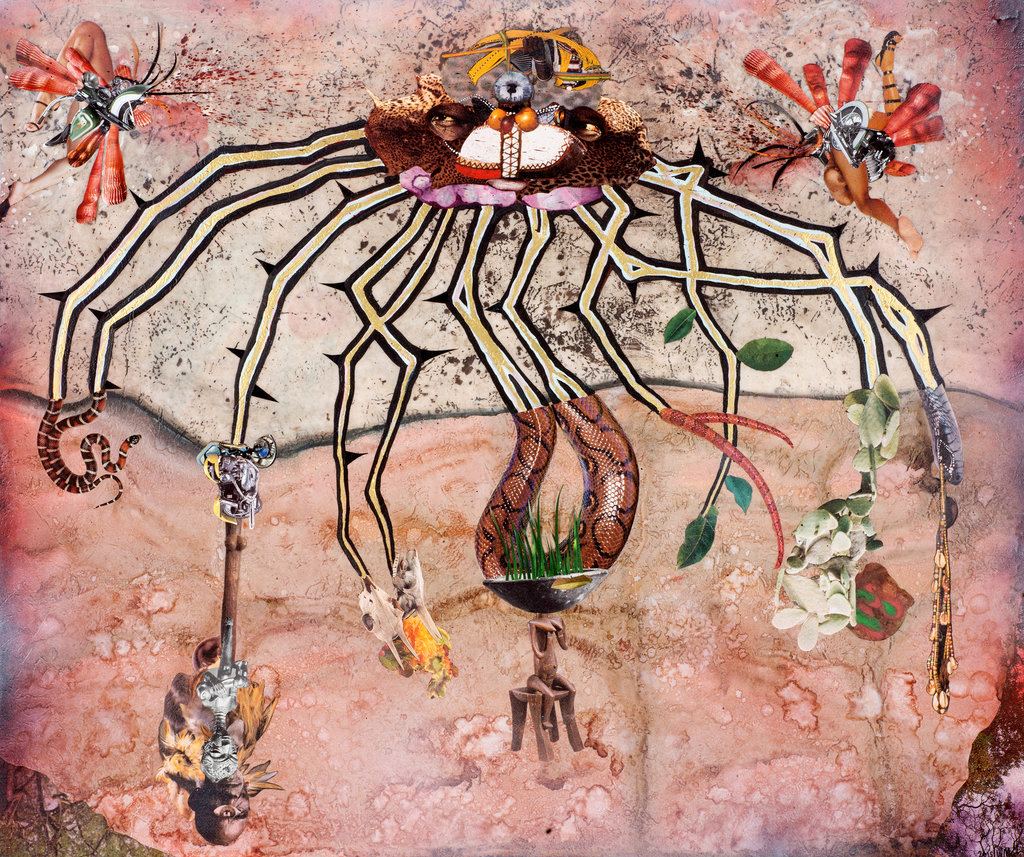
If reading the New York Times Sunday Book Review is a part of your weekend routine, you’re in luck. This week marks the first ever art-themed issue, which features five image-based book reviews from a diverse list: Wangechi Mutu, Joan Jonas, Jacolby Satterwhite, Kader Attia, and Ed Ruscha.
The artists selected the books to review themselves, choosing themes that personally resonated with them.
“I read Arundhati Roy’s The God of Small Things many, many years ago, at a time when I was considering the idea of what home meant to me,” Mutu writes in a short text that accompanies her visual review. “This book helped me reflect on how important the personal experience is in describing the shared, and even the universal.”
Joan Jonas.
Photo: Courtesy the New York Times and the artist.
“Andrew Durbin’s Mature Themes uses and interchanges the forms of poetry, essay, prose, etc. so spatially until I begin to interpret the book as sculpture,” Satterwhite writes.
“I picked this book because its twin subjects are close to my heart: the state of Oklahoma and the livelihood of bootlegging,” Ruscha, who spent his childhood in Oklahoma City, writes of Ron Padgett’s Oklahoma Tough: My Father, King of the Tulsa Bootleggers.
Ed Ruscha.
Photo: Courtesy of the New York Times and the artist.
Creating a new breed of criticism for something so steeped in tradition is a difficult task, and whether or not the reviews are successful is a matter of opinion. Unlike a typical book review, they won’t tell you very much about the specifics of what the book is about, but they will show you how it made an artist feel. We imagine the visual reviews will resonate most with people who have read and enjoyed the books already.
The issue also features various articles on artists and the art scene by journalists including Holland Cotter, who surveys the changes in the art world since the 1970s, and Chris Kraus, who writes about the hot-button topic of Linda Nochlin’s influential 1971 essay “Why Have There Been No Great Women Artists?”